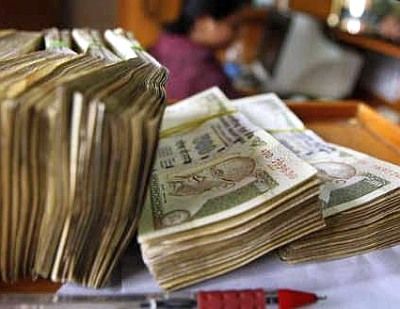 A few Asian central banks, mainly China's and South Korea's, do such intervention occasionally but the derivatives markets there are deep.
A few Asian central banks, mainly China's and South Korea's, do such intervention occasionally but the derivatives markets there are deep.
A week before a crucial meeting where the US Federal Reserve may raise interest rates, the Reserve Bank of India on Wednesday said it would intervene in the exchange-traded currency derivatives markets, if required.
It would do so in addition to its regular intervention in the spot and forwards market.
ETCDs include currency futures and options where four pairs get traded: rupee-dollar, rupee-yen, rupee-pound and rupee-euro.
Typically, these markets are being used for hedging.
Speculators in these were blamed for the rupee hitting a record low of 68.85 a dollar on August 28, 2013.
RBI's intervention in the currency market is through public sector banks.
While it regularly intervenes in the forwards market to iron out volatility in the exchange rate, it had kept off the exchange-traded market.
“The Reserve Bank of India intervenes in the domestic foreign exchange market when required to manage excessive volatility and to maintain orderly conditions in the market.
"As a further measure, it has been decided to intervene in the ETCD segment, if required,” the central bank said on its website, post market hours.
While there is no bar on such intervention, not many central banks in the world do it or at least admit to it. Brazil's central bank has an official stance on intervening in the futures market.
A few Asian central banks, mainly China's and South Korea's, do such intervention occasionally but the derivatives markets there are deep.
With the announcement, RBI joins the rank of the rare central banks to accept intervention in the futures market as one of its exchange rate management tools.
Its officials, including governors, have acknowledged several times that the central bank regularly intervenes in the over-the-counter currency market, not for defending any currency level but to iron out volatility.
“I can’t understand why RBI would want to do this,” said Jamal Mecklai, another senior currency consultant and commentator.
“The recent rupee movement may have prompted RBI to announce this. Looks like Raghuram Rajan is expecting some serious global trouble ahead,” he said.
RBI in recent times has firmly tried to control volatility in the currency market by active intervention.
The volatility, fed by speculation, has been largely checked even as the central bank's actions on last Friday were interpreted as an exchange rate signal.
On Friday, rupee hit 66.99 a dollar but RBI intervened aggressively to not let it cross the 67 mark.
Rupee pulled back and stop losses triggered on the books of speculators expecting the currency to fall further.
So far this year, rupee has fallen more than five per cent against the dollar, but has fared better against most other major currencies.
Currency dealers said rather than serious intervention, RBI, through its notification, might have just enabled the right do so with a rare acknowledgement of its intervention activities.
Senior currency consultants are baffled.
“I am surprised,” said A V Rajwade, a senior consultant and market commentator.
“It looks like a precautionary step ahead of the rise in dollar interest rates and to prevent volatility from portfolio flows.”
The volume in the exchange-traded derivatives market crossed Rs 1 lakh crore (Rs 1 trillion) on one day in June 2013, but came down sharply after the RBI put restrictions on banks to take a proprietary position in this market. These have since been lifted in phases but the market has not recovered.
Rather, it is shrinking.
The daily average turnover in December in the exchange-traded derivatives market was Rs 22,565 crore (Rs 225.65 billion), down from Rs 28,164 crore (Rs 281.64 billion) in November.
The highest daily average volume in the past year was in January, hitting Rs 34,347 crore (Rs 343.47 billion) on average.
The figure is still far lower than the Rs 107,818 crore (Rs 1,078.18 billion) it reached on June 20, 2013.
The rupee closed at 66.84 a dollar on Wednesday, unchanged from its Tuesday's level, which was a two-year low.
“RBI already intervenes in the forwards market and they may think moving in the futures market would make the intervention more efficient,” said A Prasanna, chief economist at ICICI Securities Primary Dealership.
The central bank said it would be releasing the data on such intervention in its monthly bulletin, where it already provides data on purchase and sale of dollars in the forwards market.
The outstanding net purchase of dollars in the forwards markets in September was $1,711 million, latest data by the RBI shows.









